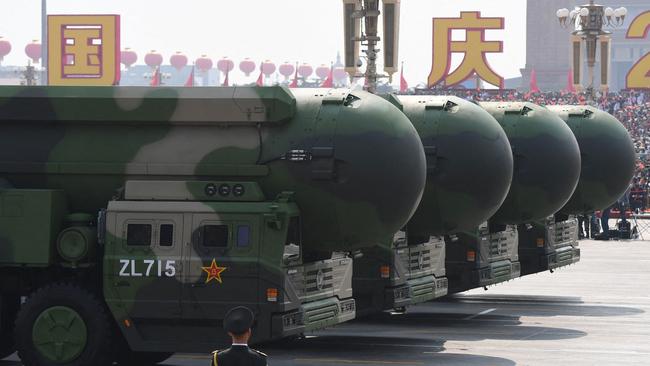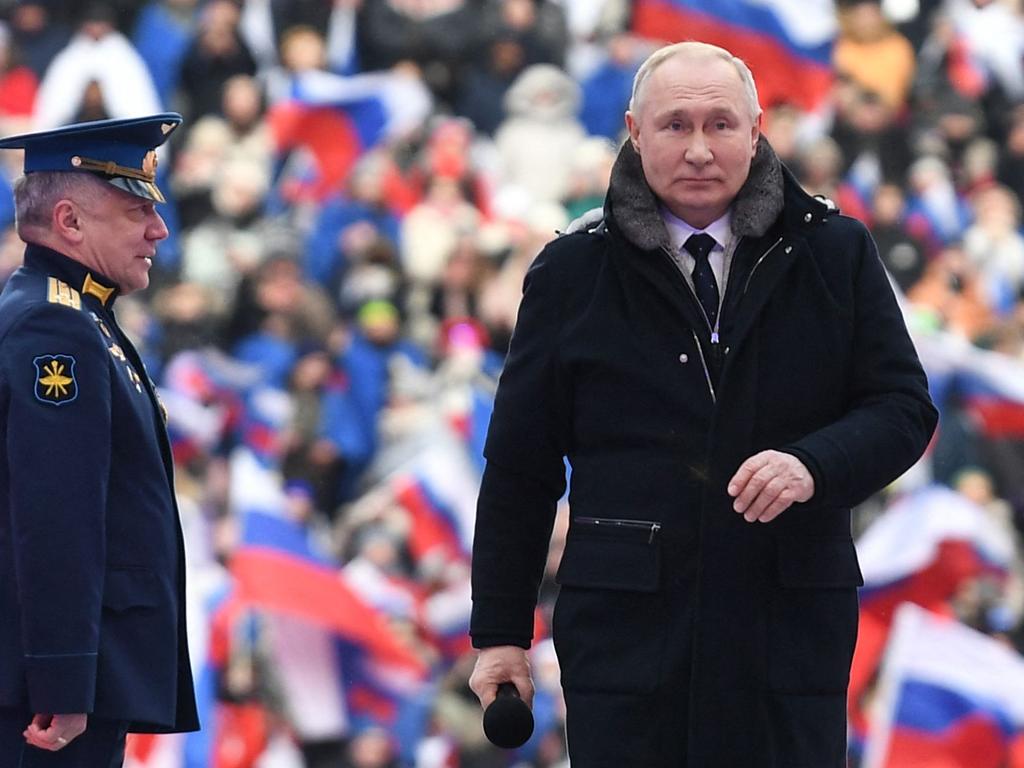Scenario for a nightmare world of US-China nuclear war

Inked on each plaque is the name and the place of death. Most record the place as being “Im Osten” (in the east) or “In Russland” (in Russia). The dead were in their 20s, some their teens.
The Porer family lost 18-year-old Clement in January and 20-year-old Hans in August 1944. The Winreiter family lost their second son Michael in April 1945. Grim, in the war’s last month. Conrad Konn, 22, died “Im Russland” on June 22, 1941. I recognise the date. It was the day Germany invaded.
The lost men might have been fanatics and war criminals. Or they might have been among the Germans who greeted Hitler’s war with foreboding.
Before February 24 last year it was possible to believe the scorching effect of World War II was so savage that renewal of armed conflict between Europeans was inconceivable, especially in what Yale historian Timothy Snyder baptised the bloodlands of Central and Eastern Europe that saw 14 million non-combatant deaths between 1933 and 1945.

Yet this little church reminds us of how ineradicable the human instinct for resort to war.
Earlier this month an unnamed senior Western official confirmed previous estimates that in Bakhmut, a single battle of the Ukrainian war, 20,000 Russians were killed. Those losses are more than the Soviet Union suffered in its war in Afghanistan. It is about five times the number of Allied troops lost in the D-Day invasion.
Families must be seeking comfort in small churches.
Paul Dibb, in last week’s Inquirer, detailed how in the past year Russia had elevated the role of its nuclear arsenal in war planning. Vladimir Putin says Russia reserves the right to use the weapons if facing an existential threat. His government’s media allies have become flamboyant about nuclear weapons since the start of the Ukraine war. “Just one launch and England is gone,” one of them said on Russia-1, a state-owned channel.
The greatest danger might come if the country is decisively defeated and faces the loss of Russian-speaking Crimea, annexed by Russia in 2014.
In 1999 Nina Tannenwald, a political scientist at Brown University, identified among generals and politicians something called the “nuclear taboo”, an entrenched reflex against use of the nuclear option.
On June 2 last year The Economist noted the erosion of this taboo. It was most apparent in these Russian postures although the US in April last year amended its National Defence Strategy to approve use of nuclear weapons in extreme circumstances in response to a conventional attack.
On his 100th birthday last month Henry Kissinger repeated warnings of a “classic pre-World War I situation”, addressing tensions between China and the US.
I can find only one attempt to describe how such a war might be fought. Retired US admiral James Stavridis and former marine Elliot Ackerman co-wrote a novelised account of this nightmare published in 2021 under the title 2034: A Novel of the Next World War. Stavridis served as commander of NATO and twice led a carrier battle force. His scenario must be granted credibility. There is one striking takeout. Stavridis and Ackerman do not assume a 48-hour Armageddon. Instead they describe a slow-motion nuclear exchange, and of tactical, not strategic, nuclear bombs.
Their conceit is that in the first phase of conflict China has used cyber and missile supremacy to sink two US carrier groups. The view that the US could lose a conventional exchange with China is reasonably widely held.
The blow to US primacy is shattering, the effect on US opinion traumatic. The president (whom Stavridis makes a woman, under pressure to prove her strength) responds by approving the use of a tactical nuclear weapon over a Chinese city with a population of 10 million, heedless of the certainty that China will respond. Beijing does respond, exploding tactical nuclear weapons on Galveston and San Diego.
Both sides are vulnerable. Contemplate US strikes on the Yangtze and Yellow rivers, where flood control and irrigation have formed the basis for all Chinese civilisation. Tactical nuclear strikes would leave hundreds of millions homeless, poisoned and starving. Chinese missiles lobbed at America’s west coast would destroy the farm bowl of California’s Central Valley, which produces 25 per cent of the nation’s food. All America’s mighty energies would be required to treat survivors of radioactive fallout crowded in tent cities under clouds of poison. The economies of both superpowers would be pancaked.
Maybe the US would inflict more devastation on China – the novel ends as it is about to destroy Shanghai – before the two fatally maimed combatants stumble into some kind of ceasefire. The devastation inflicted is historic.
Stavridis and Ackerman dare to imagine what, in my reading, no other experts have: the new power balance that emerges in a nightmare world produced by a US-China nuclear exchange.
In their scenario India asserts its claim to world leadership and insists the relocation of UN headquarters to Delhi, even as it quickly evolves into an authoritarian Hindu dictatorship. Russia, of course, is also set up for triumph in this burnt-out, post-American world community. The other triumvir, quickly assuming full nuclear weapons strength, is Iran, still in 2034 a theocracy run by its Islamic Revolutionary Guard Corps.
These three nations enjoy deeper grooves of collaboration and cordiality than when the book appeared two years ago.
When I briefed a friend from our own military on this speculative thesis the response was, “Well, I always assumed the Yanks couldn’t win a conventional exchange.” This in a world that has lowered the taboo on nuclear weapons use and a US that has explicitly done so.
Former secretary for defence Jim Mattis volunteered that the series of miscalculations portrayed in the book are realistic. Miscalculations are key. One of the book’s characters says, “Inherent in all wars … was a miscalculation; when a war starts both sides believe that they will win.”
No critic has been able to dismiss this dystopia as intrinsically unlikely. There is Kissinger’s warning. There is the weight of 20th-century history with its war memorials such as St Anton, a small church in the Alps, to record the cost of folly.
Bob Carr is the longest serving premier of NSW and a former Australian foreign minister.







It was a small church and its icons were faded, wrote Dostoevsky, but such churches are best for praying in. I recalled his description of an ideal church when I entered St Anton in Garmisch-Partenkirchen, in the foothills of the German Alps. It’s a small, whitewashed structure, under a dome with pews for fewer than 100. St Anton needed to be a good place for praying. Hanging in its vestibule are carved wooden plaques, each inlaid with a photo of a veteran from World War II.